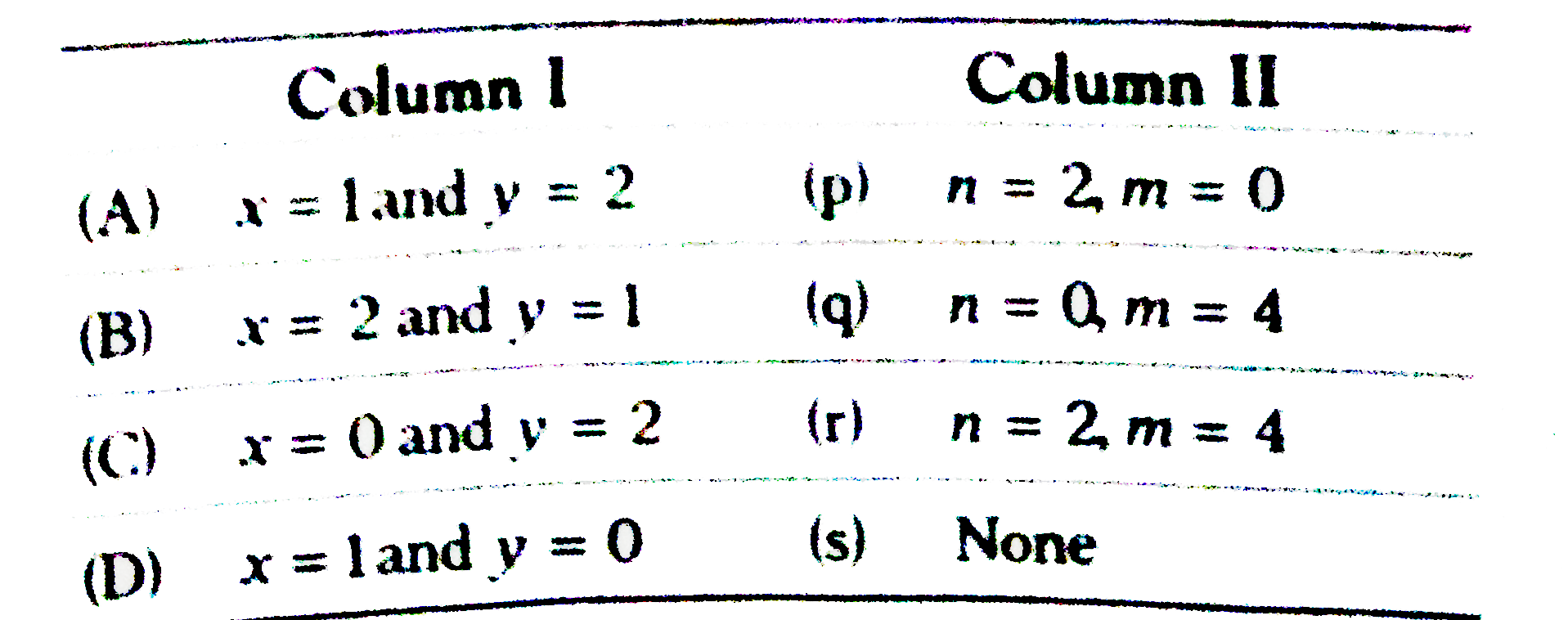Statement-1:A particular radioactive element can emit either -particle or -particle but never simultaneously.
Statement-2:Rest mass of -rays is zero
Statement-3:The -particle is the fast moving electron ejected from the nucleus .
A. TTT
B. TTF
C. FTT
D. TFT
a. TTT
b. TTF
c. FTT
d. TFT
The correct Answer is:A
Step by step video & image solution for Statement-1:A particular radioactive element can emit either alpha-particle or beta-particle but never simultaneously. Statement-2:Rest mass of gamma-rays is zero Statement-3:The beta-particle is the fast moving electron ejected from the nucleus . <BR><BR>A. TTT<BR>B. TTFC. FTT<BR>D. TFT by Physics experts to help you in doubts & scoring excellent marks in Class 12 exams.
Updated on:21/07/2023Topper's Solved these Questions
- NUCLEIBOOK - AAKASH INSTITUTE ENGLISHCHAPTER - NUCLEIEXERCISE - Assignment Section I (Subjective)
2 Videos
- NUCLEIBOOK - AAKASH INSTITUTE ENGLISHCHAPTER - NUCLEIEXERCISE - Assignment Section J (Aakash Challengers Questions)
3 Videos
- NUCLEIBOOK - AAKASH INSTITUTE ENGLISHCHAPTER - NUCLEIEXERCISE - Assignment Section G (Integer)
2 Videos
- MOVING CHARGES AND MAGNETISMBOOK - AAKASH INSTITUTE ENGLISHCHAPTER - MOVING CHARGES AND MAGNETISMEXERCISE - Assignment Section J (Aakash Challengers Questions)
5 Videos
- OSCILLATIONSBOOK - AAKASH INSTITUTE ENGLISHCHAPTER - OSCILLATIONSEXERCISE - Assignment (Section D) (ASSERTION-REASON TYPE QUESTIONS)
13 Videos
Similar Questions
Statement-1:A particular radioactive element can emit either α-particle or β-particle but never simultaneously.
Statement-2:Rest mass of γ-rays is zero
Statement-3:The β-particle is the fast moving electron ejected from the nucleus .
A. TTT
B. TTF
C. FTT
D. TFT
View SolutionAssertion :Radioactive nuclei emit β−1 particles.
Reason :Electrons exist inside the nucleus.
View Solution
Knowledge Check
Statement -1 : Large angle scattering of alpha particles led to the discovery of atomic nucleus.
Statement -2 : Entire positive charge of atom is concentrated in the central core.Aif both assertion and reason are true and reason is the correct explanation of assertion.Bif both assertion and reason are true but reason is not the correct explanation of assertion.Cif assertion is true but reason is false.Dif both assertion and reason are false.
Radioactive nuclei emit β−1 particles.
Electrons exist inside the nucleus.
View SolutionRadioactive nuclei emit β−1 particles.
Electrons exist inside the nucleus.
View SolutionStatement-1 : In α-emission, the α-particle carries in heavy elements.
and
Statement-2 : In α-decay, the α-particle being lighter has more velocity.
View SolutionStatement-1 : In a nuclear reaction it is concluded that a β emission is accompanied by a neutrino or an antineutrino.
Statement-2 : It is observed that different β particles emitted from same sample posses different K.E.
View SolutionFrom a radioactive substance x numbers of α-particles any y numbers of β-particles are emitted. As a result atomic number decreases by n and mass number by m. Then, match the following two columns.

View SolutionA : During radioactive disintegration an α-particle and a β-particle do not emit simultaneously from any nucleus.
R : An α-particle emits from a nucleus when the N/Z ratio is less than the stability range (where N=number of neutrons and Z=number of protons in a nucleus. )
View SolutionStatement-1 In a region of space, both electric and magnetic field act in same direction. When a charged particle is projected parallel to fields, it moves undeviated
Statement-2 Here, net force on the particle is not zero
View Solution
